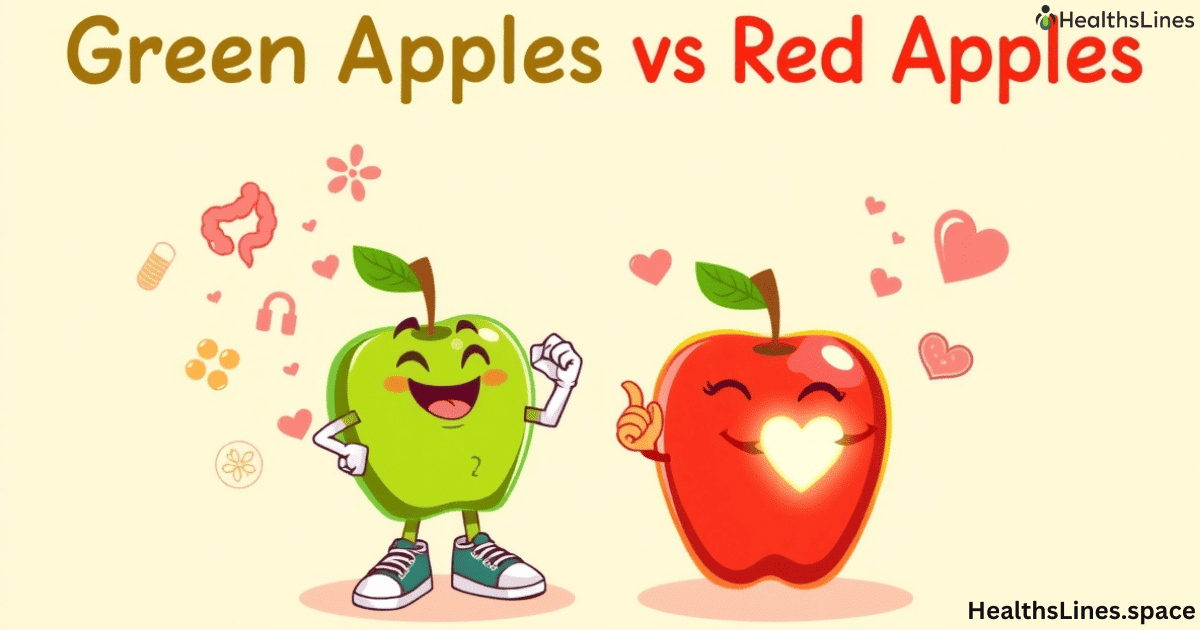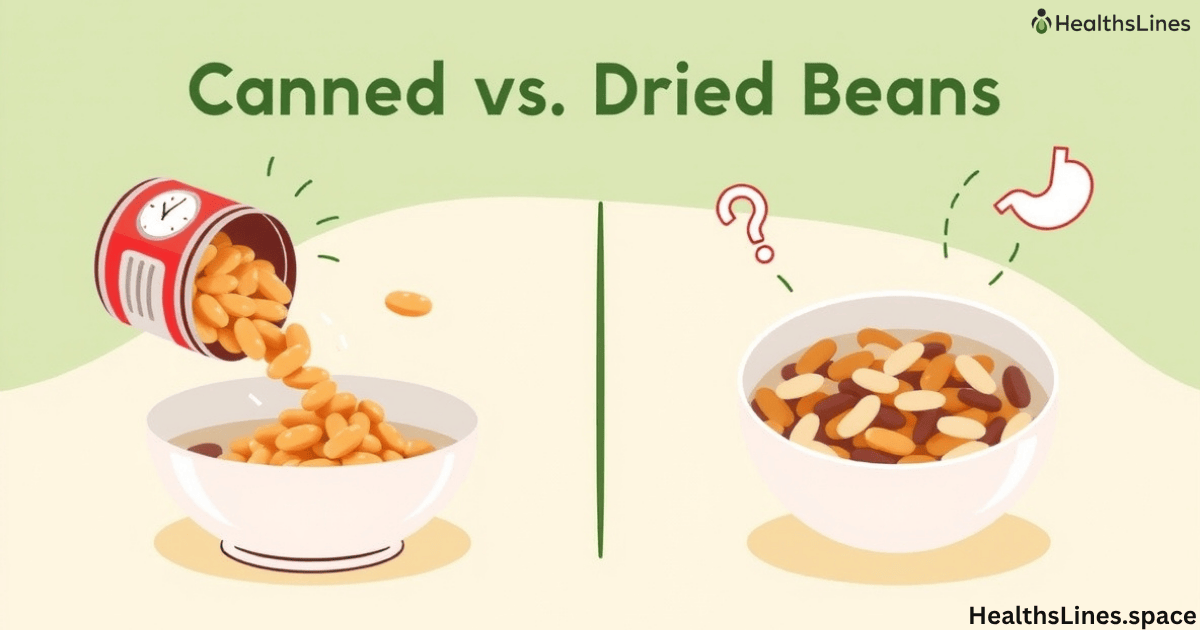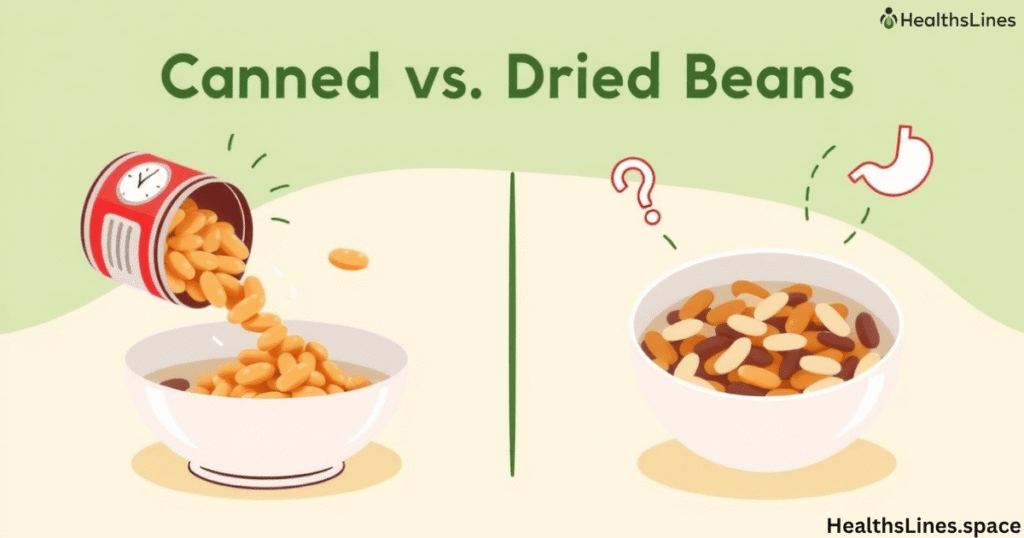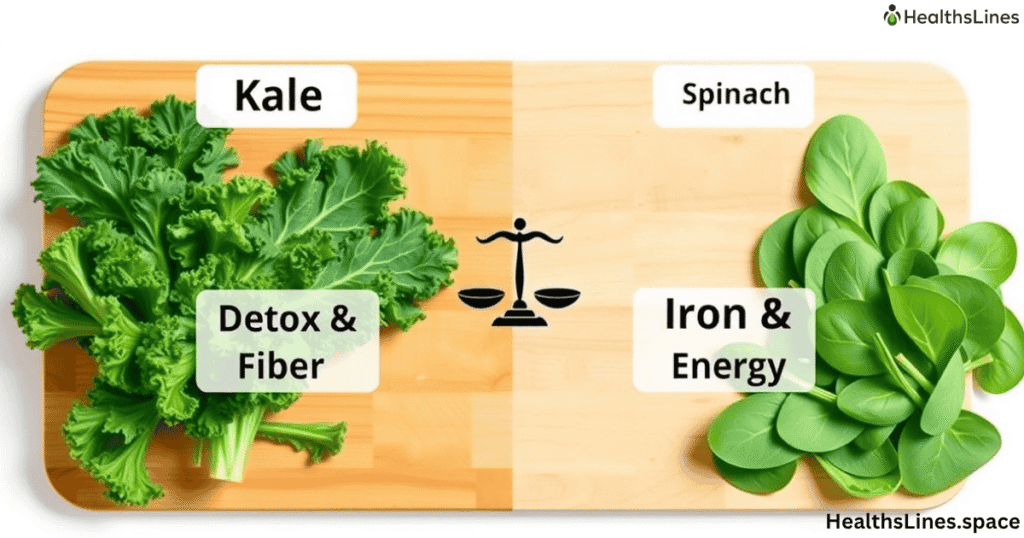Apples are one of the most eaten fruits in the world. People love them because they are simple to eat, easy to pack, and filled with good nutrients. Yet, not all apples are the same. The color of an apple, whether it is a green apples vs. red apples , tells us about its taste, nutrition, and health benefits. Many people wonder which one is healthier. To answer that, we need to look at the facts and compare them.
When you think about green apples vs red apples, you may first notice the taste. Green apples are often sour and crisp while red apples are sweet and juicy. But beyond taste, the difference goes deeper. The skin color shows us that they have different plant chemicals, sugar levels, and fiber. By looking at science and nutrition, you can see which apple fits your health goals.
Nutritional Differences Between Green and Red Apples
The first way to compare apples is through their nutrients. Green apples, like Granny Smith, usually have fewer calories and less sugar. Red apples, like Fuji or Gala, are sweeter because they contain more natural sugar. Both are still packed with fiber, vitamin C, potassium, and antioxidants, which help your body stay healthy.
| Nutrient | Green Apple | Red Apple |
| Calories | 95 | 105 |
| Sugar | 17 g | 19 g |
| Fiber | 4.4 g | 4 g |
| Vitamin C | 8% DV | 10% DV |
| Potassium | 195 mg | 210 mg |
From this chart, you can see that green apples have less sugar and fewer calories. This makes them a good choice for people watching their weight or blood sugar. On the other hand, red apples are a little sweeter, which makes them more enjoyable to eat raw for many people.
The Science Behind Apple Color
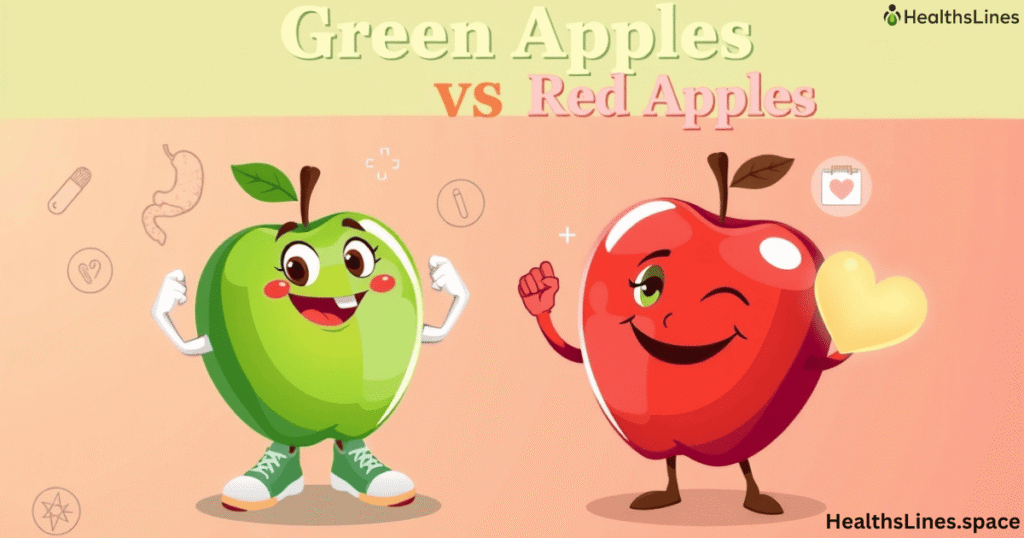
Have you ever wondered why some apples are green and some are red? The answer lies in plant pigments. Red apples get their bright color from anthocyanins. These are powerful antioxidants also found in blueberries and grapes. They help protect the apple from sun damage, and when you eat them, they help protect your body from harmful free radicals.
Green apples keep their color because they have more chlorophyll. This is the pigment that helps plants make energy from sunlight. Chlorophyll not only gives green apples their crisp and tart taste, but it also plays a role in antioxidant activity. So while both colors are healthy, they protect your body in slightly different ways.
Health Benefits of Green Apples
Green apples stand out for their tart taste and crisp texture, but their health benefits are just as strong. One of the biggest advantages is their lower sugar content. Compared to sweeter apples, green apples don’t raise blood sugar as quickly. This makes them a smart choice for people managing diabetes or those who want to keep steady energy levels during the day. Eating a green apple before a meal may even help you avoid sugar cravings, since the tart flavor satisfies your taste buds without adding too many calories.
Another major benefit of green apples is their fiber content. Fiber is important for digestion because it keeps food moving through the stomach and intestines. It also makes you feel full, which helps with weight control. A study in the Journal of Nutrition showed that people who ate more fiber-rich fruits like green apples consumed fewer calories overall. That’s why green apples are often linked with better weight management.
Green apples also contain vitamin C, which helps your immune system fight off infections, and antioxidants, which protect your body from harmful free radicals. Together, these nutrients make green apples a small but powerful tool for better health.
Health Benefits of Red Apples
Red apples are loved for their sweet flavor, but they also bring many health benefits. Their bright color comes from anthocyanins, which are natural plant compounds that act as powerful antioxidants. These antioxidants protect your body by fighting free radicals, which are harmful molecules that can damage cells over time. By eating red apples often, you support your body in reducing stress and inflammation, which helps prevent long-term diseases.
One of the most important benefits of red apples is for heart health. Studies in the American Journal of Clinical Nutrition show that anthocyanins can lower the risk of heart disease by improving blood vessel function and reducing inflammation. This means that adding red apples to your diet may help keep your heart stronger and healthier.
Red apples also support your immune system. They contain vitamin C along with other natural plant compounds that help the body fight off colds and infections. Regularly eating red apples has even been linked with better lung function and fewer asthma symptoms. These protective effects show that red apples go beyond just being a sweet snack.
Taste, Texture, and Culinary Uses
The first thing most people notice about apples is their taste. Green apples are known for being tart and crisp. Their sour bite makes them refreshing and unique compared to sweeter fruits. Because they hold their shape well, green apples are often used in baking. A Granny Smith apple in a pie, for example, keeps its firm texture even after cooking, giving every slice a tangy kick. Green apples also work well in salads, juices, and sauces where a sharp flavor is needed to balance sweeter or richer ingredients.
Red apples, in contrast, are usually sweet and juicy. They tend to have softer flesh, which makes them ideal for snacking. A red apple like Fuji or Honeycrisp is perfect to eat raw because it provides natural sweetness without the need for added sugar. They’re also popular in smoothies, fruit salads, and as a quick snack paired with peanut butter or cheese. While some red apples can be baked, many varieties become soft when cooked, so they’re not always the first choice for pies or sauces.
Both red and green apples bring variety to cooking and eating. Whether you enjoy the sour crunch of a green apple or the juicy sweetness of a red apple, each type has a role in the kitchen and adds flavor to different dishes.
Varieties of Green and Red Apples
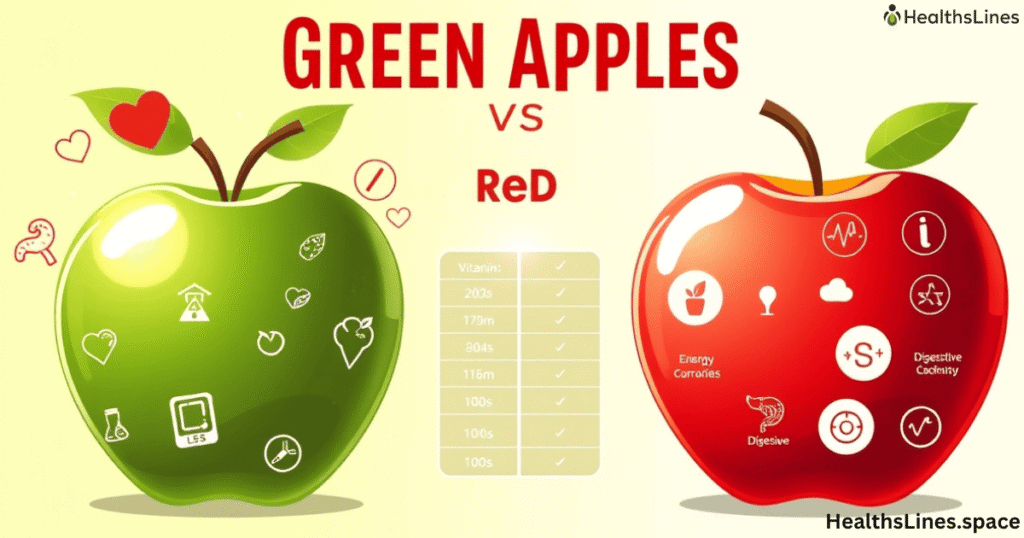
There are many types of apples, and each has its own flavor, texture, and use. The most famous green apple is the Granny Smith. It’s very tart, crisp, and perfect for pies or salads. Because it holds its shape so well, many bakers prefer it for apple desserts. Other green varieties include Crispin, also known as Mutsu, which is larger and has a sweet-tart balance, and Shizuka, which is milder and sweeter than Granny Smith but still crisp. These less common green apples give people options when they want something between sour and sweet.
Red apples come in more varieties than green apples, and each one offers something special. Fuji apples are among the sweetest and are very juicy, making them perfect for snacking. Gala apples are softer, with a light sweetness and floral aroma that makes them popular in fruit salads. Honeycrisp is known for its perfect crunch and balanced flavor, which many people say is the best of both worlds. Red Delicious, while once the most common in stores, is now less popular because of its softer texture, but it still remains a classic.
By knowing the varieties of red and green apples, you can choose the right one for your taste and cooking needs. Each type offers something unique, whether you want sour, sweet, crisp, or juicy.
Which One Should You Choose?
Choosing between green apples and red apples often depends on your taste, health needs, and cooking plans. If you like a sour, sharp flavor that makes your mouth water, green apples are the best choice. They are lower in natural sugar and higher in acid, which gives them that tangy bite. Green apples are also great if you are watching your sugar intake or want a fruit that keeps you feeling full longer. Many people use them in baking because they stay firm when cooked, making pies and crisps more flavorful.
On the other hand, if you enjoy a sweet, juicy bite, red apples are the better pick. Their natural sugars make them taste like a treat, and their softer texture works well for fresh eating, smoothies, or fruit salads. Red apples also come in more varieties, giving you plenty of choices, from super sweet Fuji to perfectly crisp Honeycrisp. They are ideal if you want a healthy snack that satisfies your sweet tooth without processed sugar.
The decision really depends on what you’re looking for in the moment. For baking or a low-sugar option, go with green apples. For sweetness, variety, and snacking, choose red apples. Both kinds are healthy, so you can enjoy them anytime.
Final Thoughts
So, are green apples or red apples healthier? The truth is that both are great for you. Green apples help with weight control and blood sugar while red apples help with heart health and immunity. Each has something special to offer, and both are delicious.
If you want the most benefits, try mixing them up. Add slices of Granny Smith to your lunch for a tart crunch and enjoy a Fuji as an afternoon snack for a sweet boost. No matter the color, apples prove that simple fruits can have powerful health effects.
